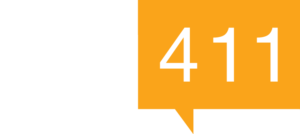The diversity, equity, and inclusion (DEI) backlash has moved from political talking points to federal enforcement. The Equal Employment Opportunity Commission (EEOC) has released new guidance that effectively puts a spotlight on when DEI becomes not just controversial but illegal. If your organization is still operating under 2019-era DEI assumptions, it’s time to recalibrate. Fast.
The DEI Dilemma
The term “illegal DEI” didn’t exist a few years ago. Now, it’s a legal and operational reality. Following recent executive orders and shifting regulatory attitudes, the EEOC has clarified that any employment action, hiring, firing, or promoting, that is motivated “in whole or in part” by race, sex, or other protected characteristics may violate Title VII.
Even good intentions can land you in hot water—especially when DEI efforts edge into legally gray territory. The bottom line: It doesn’t matter if race or gender was one of several factors. If it played any role in an employment decision, you’re exposed.
12 DEI Practices Under Legal Scrutiny
The EEOC outlined 12 critical red flags, areas where DEI efforts most often cross the legal line:
- Hiring: Prioritizing candidates based on race or gender is prohibited, even if diversity is the goal.
- Firing and demotions: Protected class can’t be a factor, even implicitly.
- Promotions: Advancement must be based on merit, not identity.
- Pay and benefits: Compensation structures that vary by demographic group are unlawful.
- Training and development: Access must be equitable; prioritizing underrepresented groups violates Title VII if it excludes others based on protected characteristics.
- Mentoring, networking, internships: The same legal standards apply, even in informal or unpaid contexts.
- Work assignments and classifications: Segregating employees or reserving projects for certain groups is high-risk.
- ERGs, BRGs, and affinity spaces: While valuable, these programs can’t exclude or disadvantage others by design or effect.
If that list makes you nervous, you’re not alone. But it’s a necessary wake-up call for HR professionals recalibrating DEI strategies in a new climate.
Audit or Be Audited
If you haven’t already done a DEI policy audit in 2024, now’s the time. Look especially at program language, selection criteria, and eligibility requirements. Is any part of your DEI programming suggesting preference based on identity? Even the perception of bias could be enough to invite legal scrutiny or internal dissent.
Stephen Paskoff, former EEOC attorney, put it bluntly: “Diversity and DEI programs must adhere to the law. And in instances where they don’t and/or create divisive conditions, intentionally or otherwise, they need to be replaced.”
Compliance matters, but credibility is what sticks. Your people are watching. But so are the courts.
MEI: A New Acronym, or Legit Evolution?
Some organizations are pivoting toward a new framework: MEI (Merit, Excellence, and Intelligence). Proponents argue MEI retains the spirit of DEI while shifting emphasis to individual capability and performance. It’s a strategic rebranding that lowers legal exposure while keeping equity goals alive.
Skeptics, however, warn that MEI could become just another buzzword unless it’s backed by thoughtful program design and transparent communication. Replacing DEI with MEI doesn’t eliminate the need for legal review. In fact, it raises the stakes. If MEI is seen as performative or exclusionary, it may backfire.
Use this trend not as a shortcut, but as a prompt to rethink how you define fairness and access in your workplace.
Train Like Compliance Depends on It (Because It Does)
Your managers, especially those involved in hiring and promotions, need updated training yesterday. Don’t assume they understand the legal distinction between inclusive outreach and preferential treatment.
Training should clearly outline:
- What constitutes unlawful DEI under Title VII
- How to implement inclusion strategies without bias
- Real-world scenarios that walk the line between legal and illegal practices
- How to document decisions in a way that demonstrates compliance
Even seasoned HR teams need refreshers. With guidance shifting and legal standards tightening, ignorance could be a liability.
DEI Isn’t Dead … But It’s Evolving Fast
You don’t need to dismantle your DEI efforts. But you do need to re-engineer them through the lens of legality and accountability. The EEOC has raised the bar and the risk. Smart HR leaders will stop treating compliance and inclusion as separate tracks. The future belongs to those who can lead with both in mind.
SOURCES: HR Morning
Legal Disclaimer:
The information provided in this article is for general informational purposes only and is not intended to constitute legal advice. While efforts have been made to ensure the accuracy of the content at the time of publication, employment law and regulatory guidance are subject to change and interpretation by courts and government agencies. Readers are encouraged to consult qualified legal counsel or a professional employment law advisor before making any employment or policy decisions based on the information provided in this article. The publisher and author disclaim any liability for actions taken or not taken based on the content herein.






